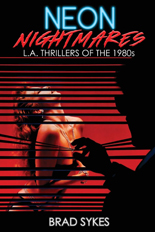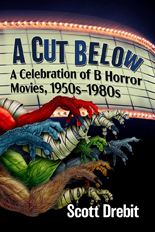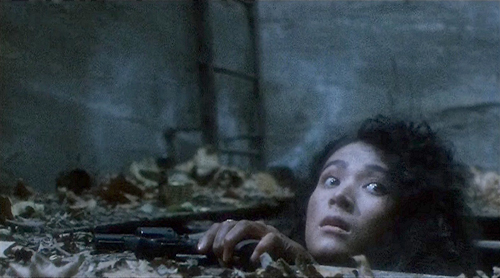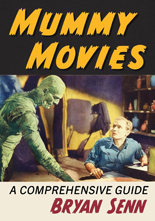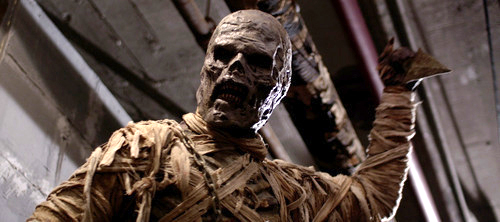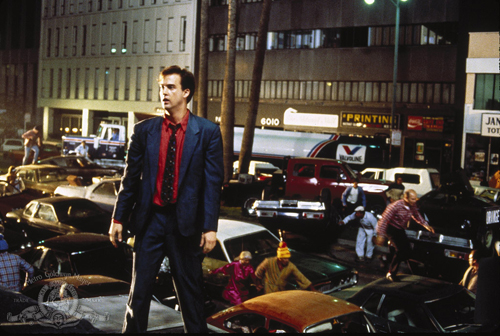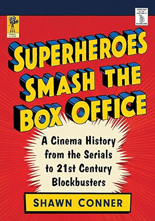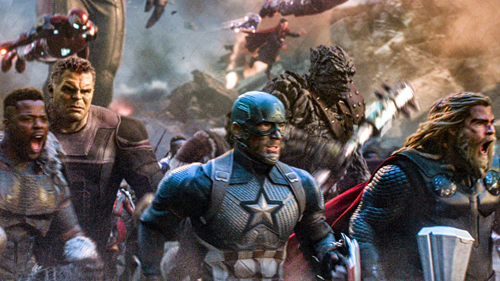
Damn you, Scream Queen filmmaker Brad Sykes. Damn you to hell! Do you expect anyone to ever get through your new book, Neon Nightmares: L.A. Thrillers of the 1980s? You’ve made so many of the movies sound so intriguing, one has to stop reading immediately to hunt down and watch the film under discussion before proceeding. Was this part of some master plan all along? Are you receiving a cut of royalties for every VOD stream of Richard Gere’s Breathless remake? Judd Nelson in Relentless? The computer-dating oddity Dangerous Love? Because this took me a month to finish reading, rather than my usual weekend. Do you not realize what that much lunch-hour viewing does to an iPhone battery in a day? A laptop battery? A marriage? I hope you and your addicting BearManor Media paperback, richly illustrated as it is, are happy for hijacking so much of my free time. Highly, highly recommended.
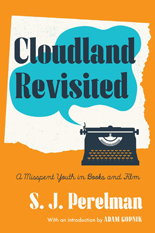
For Cloudland Revisited: A Misspent Youth in Books and Film, the venerable Library of America rounds up the late S.J. Perelman’s 22 New Yorker articles in which the literary rapscallion casts his adult eyes and poisoned pen on the pulpy paperbacks — and their flicker adaptations — of his boyhood. More often than not, the results allow Perelman to exercise — and exorcise — his considerable, even intimidating wit. The more familiar I was with the topic at hand, like Tarzan and Dr. Fu Manchu, the funnier the pieces struck. That said, I also drew heavy amusement from his discussions of then-“spicy” works, today as tame as Perelman is revered, after “greasing my face with butter to protect it from the burning prose.” One caveat: These pieces were written as early as 1937, when a learned vocabulary wasn’t an obstacle to readers; prepare yourself for “fantods,” “sachem,” “gravid” and more words Google’s ready to tackle.

You may not believe me, kids, but before your fancy internet rolled around, we got information about new and upcoming movies from artifacts called “magazines” and “newspapers.” On-set articles and interviews for more than two dozen beloved genre movies are collected in companion volumes The Dreamweavers: Fantasy Filmmaking in the 1980s and Science Fiction Filmmaking in the 1980s: Interviews with Actors, Directors, Producers and Writers. To read them is to be transported back to the days of thumbing through issues of Starlog, Twilight Zone and Fangoria at the magazine rack while your mom shopped for groceries. As with 2022’s The Joy of Sets, both trade paperbacks come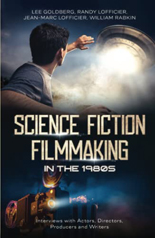 from Lee Goldberg‘s Cutting Edge imprint; unlike The Joy of Sets, Goldberg shares space with William Rabkin and spouses Randy and Jean-Marc Lofficier. Whether a movie qualifies as fantasy or sci-fi sometimes seems arbitrary, yet it hardly matters. In Dreamweavers‘ lineup, you’ll meet Buckaroo Banzai, James Bond and a few guys who ain’t ’fraid of no ghosts; in the other, Mad Max, RoboCop and the voyages of the starship Enterprise. Half the fun is seeing how prescient these journalists were. Case in point: Of Howard the Duck, Rabkin predicts, “There’s a chance that American audiences simply don’t want to see a duck starring in anything besides a plate of orange sauce.” —Rod Lott
from Lee Goldberg‘s Cutting Edge imprint; unlike The Joy of Sets, Goldberg shares space with William Rabkin and spouses Randy and Jean-Marc Lofficier. Whether a movie qualifies as fantasy or sci-fi sometimes seems arbitrary, yet it hardly matters. In Dreamweavers‘ lineup, you’ll meet Buckaroo Banzai, James Bond and a few guys who ain’t ’fraid of no ghosts; in the other, Mad Max, RoboCop and the voyages of the starship Enterprise. Half the fun is seeing how prescient these journalists were. Case in point: Of Howard the Duck, Rabkin predicts, “There’s a chance that American audiences simply don’t want to see a duck starring in anything besides a plate of orange sauce.” —Rod Lott

